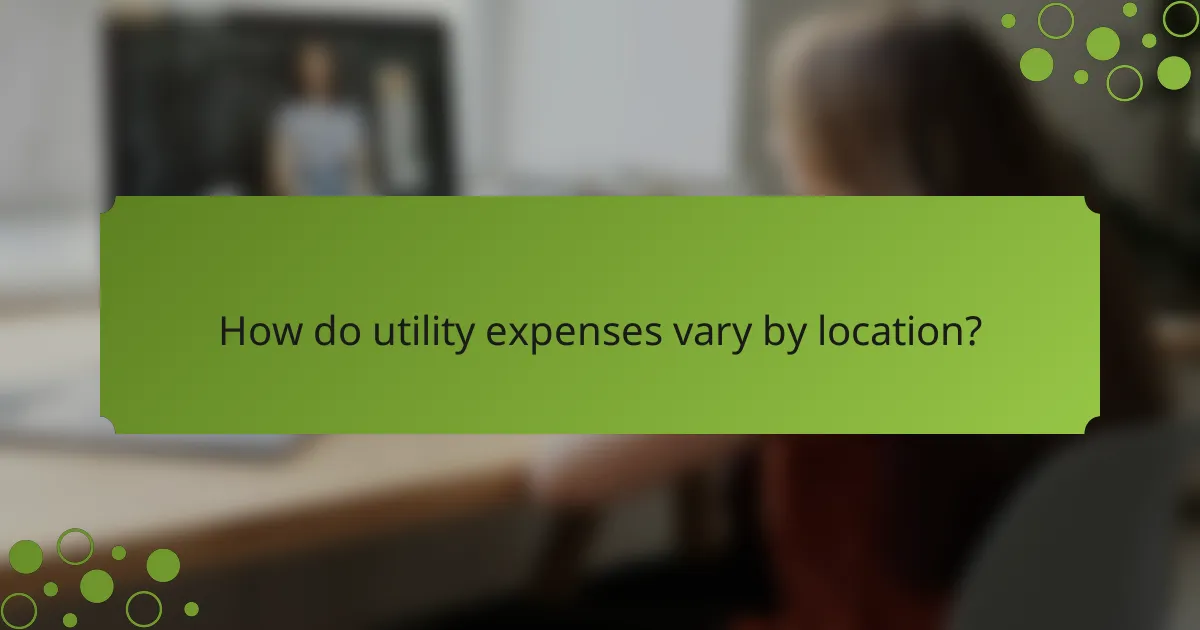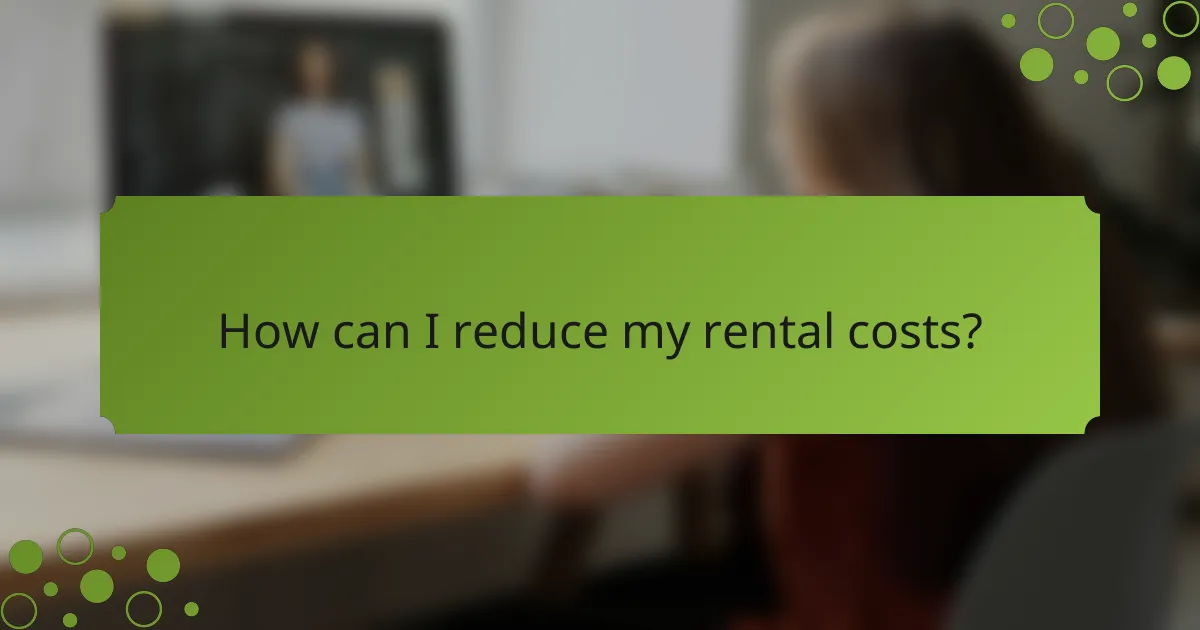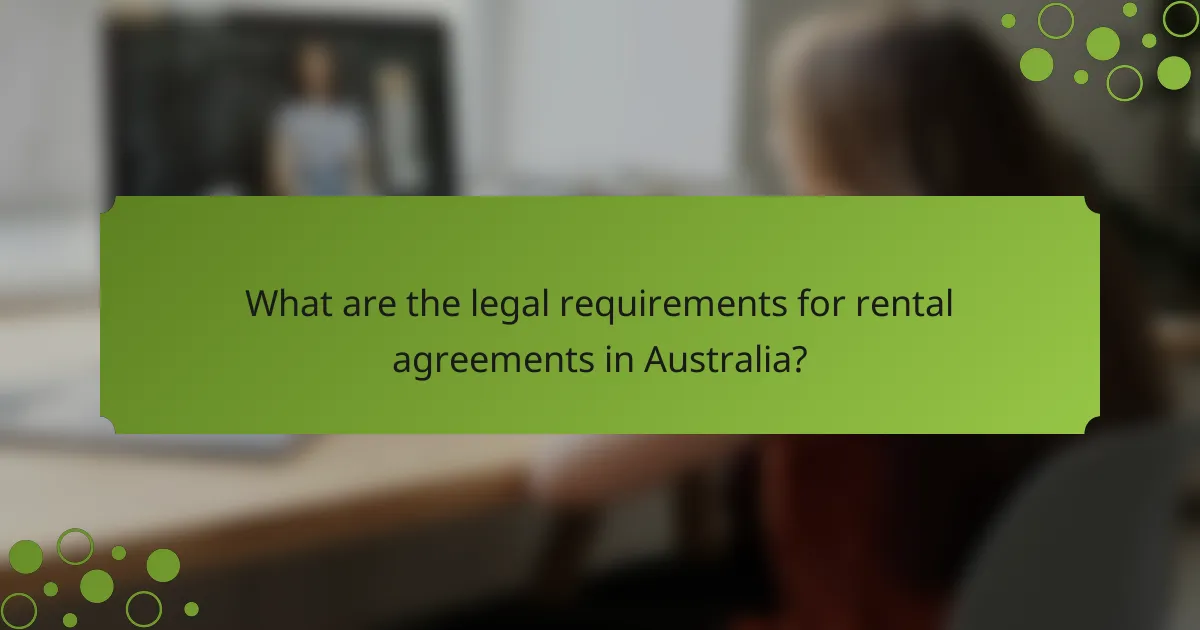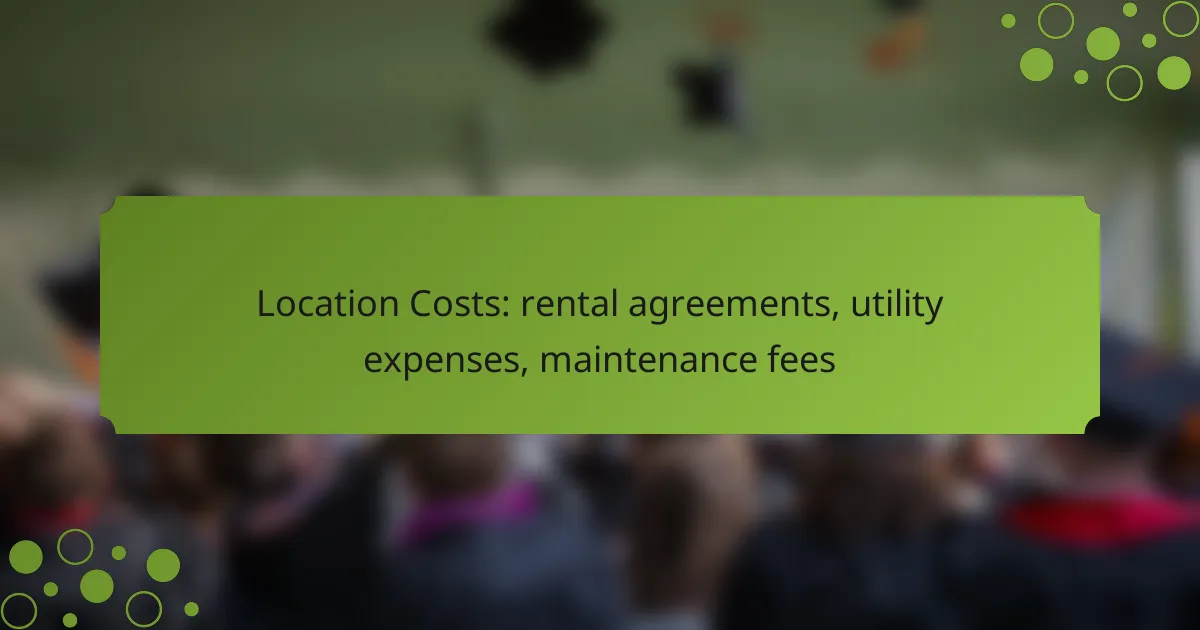When renting a property, understanding location costs is crucial for effective budgeting. Rental agreements often encompass not only the rent but also security deposits and various fees that can fluctuate based on the property’s location and type. Additionally, utility expenses and maintenance fees can vary widely, influenced by local rates and the specific services included in the lease. Being informed about these factors can help residents manage their monthly expenses more efficiently.

What are the rental agreement costs in Australia?
Rental agreement costs in Australia typically include the rent itself, security deposits, and various fees associated with leasing a property. These costs can vary significantly based on location, property type, and market conditions.
Average rental prices in major cities
In Australia, rental prices differ greatly among major cities. For instance, as of late 2023, Sydney often sees average rents in the high hundreds to low thousands of AUD per week, while Melbourne’s averages are slightly lower, typically ranging from the mid-hundreds to low thousands. Brisbane and Perth generally offer more affordable options, with average rents often in the lower hundreds.
Factors influencing rental costs
Several factors influence rental costs in Australia, including location, property size, and amenities. Properties in central business districts or popular suburbs tend to command higher rents due to demand. Additionally, features like parking, air conditioning, and outdoor spaces can increase rental prices.
Market conditions also play a crucial role; during high demand periods, such as summer, rental prices may rise. Conversely, in a tenant’s market, landlords may lower rents to attract tenants.
Lease duration impacts on pricing
The duration of a lease can significantly impact rental pricing in Australia. Short-term leases, often less than six months, may come with higher monthly rates compared to long-term leases of 12 months or more, which typically offer lower monthly costs. Landlords often prefer longer leases for stability, which can lead to more favorable pricing for tenants.
Additionally, some landlords may offer incentives, such as reduced rent or waived fees, for tenants willing to commit to longer lease terms. Always review the lease agreement carefully to understand any potential costs associated with early termination or renewal options.

How do utility expenses vary by location?
Utility expenses can differ significantly based on geographic location due to factors such as local rates, climate, and infrastructure. Understanding these variations helps residents budget effectively and manage their monthly costs.
Typical utility costs in Sydney
In Sydney, utility costs typically range from AUD 250 to AUD 400 per month for a standard apartment. This includes electricity, gas, water, and internet services. The cost of electricity is often the largest component, influenced by the region’s energy market and demand.
Residents should also consider additional fees such as connection charges and service fees, which can add to the overall monthly expenses. It’s advisable to compare different service providers to find the best rates available.
Comparative utility expenses in Melbourne
Melbourne’s utility expenses are generally similar to those in Sydney, averaging between AUD 230 and AUD 380 monthly. However, the breakdown of costs may differ, with Melbourne often having slightly lower electricity rates but higher water charges due to its water management policies.
When moving to Melbourne, it’s beneficial to research local utility providers and their pricing structures, as well as any potential discounts for bundled services. This can lead to significant savings over time.
Seasonal variations in utility bills
Utility bills can fluctuate seasonally, particularly for heating and cooling costs. In Australia, summer months may see higher electricity usage due to air conditioning, while winter can increase gas usage for heating. This can lead to monthly bills varying by 20-30% depending on the season.
To manage these seasonal changes, residents should consider setting a budget that accounts for peak usage months and look into energy-saving measures, such as using energy-efficient appliances and insulation. Regularly reviewing bills can also help identify unusual spikes in usage.

What are common maintenance fees for rental properties?
Common maintenance fees for rental properties typically cover routine upkeep and repairs necessary to keep the property in good condition. These fees can vary significantly based on location, property type, and specific services included in the agreement.
Average maintenance fees in Brisbane
In Brisbane, average maintenance fees for rental properties can range from AUD 100 to AUD 300 per month, depending on the property’s size and amenities. This may include services such as lawn care, pest control, and general repairs.
For properties in high-demand areas or with extensive facilities, fees may be on the higher end of this range. It’s advisable for tenants to clarify what is included in the maintenance fees before signing a rental agreement.
Factors affecting maintenance costs
Several factors influence maintenance costs for rental properties, including property age, location, and the level of service provided. Older properties may require more frequent repairs, while newer constructions might have lower maintenance needs.
Additionally, properties located in urban areas may incur higher costs due to increased labor rates and service availability. Tenants should consider these factors when evaluating potential rental properties.
Landlord vs tenant responsibilities
Typically, landlords are responsible for major repairs and maintenance of the property, such as plumbing, electrical work, and structural issues. Tenants, on the other hand, are usually responsible for minor repairs and upkeep, like changing light bulbs or maintaining cleanliness.
It’s crucial for both parties to clearly outline their responsibilities in the rental agreement to avoid misunderstandings. Regular communication can help ensure that maintenance issues are addressed promptly and effectively.

How can I reduce my rental costs?
To reduce rental costs, consider negotiating your lease terms, implementing energy-saving measures, and staying on top of maintenance to avoid costly repairs. Each of these strategies can lead to significant savings over time.
Negotiating rental agreements
Negotiating rental agreements can effectively lower your monthly rent. Start by researching comparable rental prices in your area to understand the market. Use this information as leverage when discussing terms with your landlord.
Consider asking for a longer lease in exchange for a lower monthly rate, or inquire about any upcoming rent increases and see if you can lock in your current rate for a longer period. Always approach negotiations respectfully to maintain a good relationship with your landlord.
Energy-saving tips for lower utility bills
Implementing energy-saving tips can significantly reduce your utility bills. Simple actions like using energy-efficient light bulbs, unplugging devices when not in use, and adjusting your thermostat can lead to savings of 10-30% on energy costs.
Additionally, consider investing in weatherproofing your home by sealing windows and doors to prevent drafts. Regularly cleaning or replacing air filters can also improve HVAC efficiency, further lowering your bills.
Preventative maintenance strategies
Preventative maintenance strategies help avoid costly repairs and can save money in the long run. Regularly inspect appliances, plumbing, and electrical systems to catch issues early. For example, checking for leaks can prevent water damage and high water bills.
Establish a routine for changing air filters and cleaning gutters, as neglecting these tasks can lead to larger problems. Document your maintenance efforts to discuss with your landlord, which may strengthen your case for lower rent or help with future negotiations.

What are the legal requirements for rental agreements in Australia?
In Australia, rental agreements must comply with state-specific laws that govern the rights and responsibilities of landlords and tenants. These agreements typically outline terms such as duration, rent amount, and conditions for termination.
Key legal terms in rental contracts
Rental contracts in Australia include several key legal terms that define the relationship between landlords and tenants. Common terms are the lease duration, rental price, and conditions for bond payments. Understanding these terms is crucial for both parties to avoid disputes.
Additionally, many contracts specify maintenance responsibilities, notice periods for terminating the lease, and rules regarding subletting. Familiarity with these terms helps ensure compliance with local regulations.
Tenant rights and obligations
Tenants in Australia have the right to a safe and habitable living environment, privacy, and protection from unfair eviction. They are also obligated to pay rent on time, keep the property clean, and notify landlords of any maintenance issues.
It’s essential for tenants to understand their rights under the Residential Tenancies Act applicable in their state or territory, as these laws provide a framework for resolving issues that may arise during the tenancy.
Dispute resolution processes
In the event of a dispute between landlords and tenants, Australia offers various resolution processes. Many states have a dedicated tribunal or authority that handles rental disputes, such as the NSW Civil and Administrative Tribunal or the Victorian Civil and Administrative Tribunal.
Before escalating to formal proceedings, parties are often encouraged to attempt mediation. This can be a quicker and less costly way to resolve issues, allowing both sides to reach a mutually agreeable solution.

What should I consider before signing a rental agreement?
Before signing a rental agreement, it’s crucial to understand the terms, costs, and responsibilities involved. Key factors include the lease duration, rental price, and any additional fees that may apply.
Understanding the fine print
The fine print of a rental agreement often contains essential details that can significantly impact your living situation. Look for clauses regarding rent increases, maintenance responsibilities, and penalties for breaking the lease. These terms can vary widely, so take the time to read and comprehend each section.
Pay attention to any additional fees, such as application fees or security deposits, which may not be immediately obvious. Knowing these costs upfront can help you budget effectively and avoid surprises later.
Assessing property condition
Before signing, thoroughly inspect the property to assess its condition. Check for any signs of damage, such as water leaks, mold, or structural issues. Document any problems you find, as this can protect you from liability for pre-existing issues.
Consider the age of appliances and systems, like heating and cooling, which can affect your utility bills. A well-maintained property can save you money in the long run, while a neglected one may lead to higher maintenance costs.
Evaluating landlord reputation
Researching your potential landlord’s reputation is vital to ensure a positive rental experience. Look for reviews online or ask current tenants about their experiences. A responsive and responsible landlord can make a significant difference in your living situation.
Check if the landlord has a history of addressing maintenance issues promptly and treating tenants fairly. This information can help you gauge whether the rental will meet your expectations and needs.
